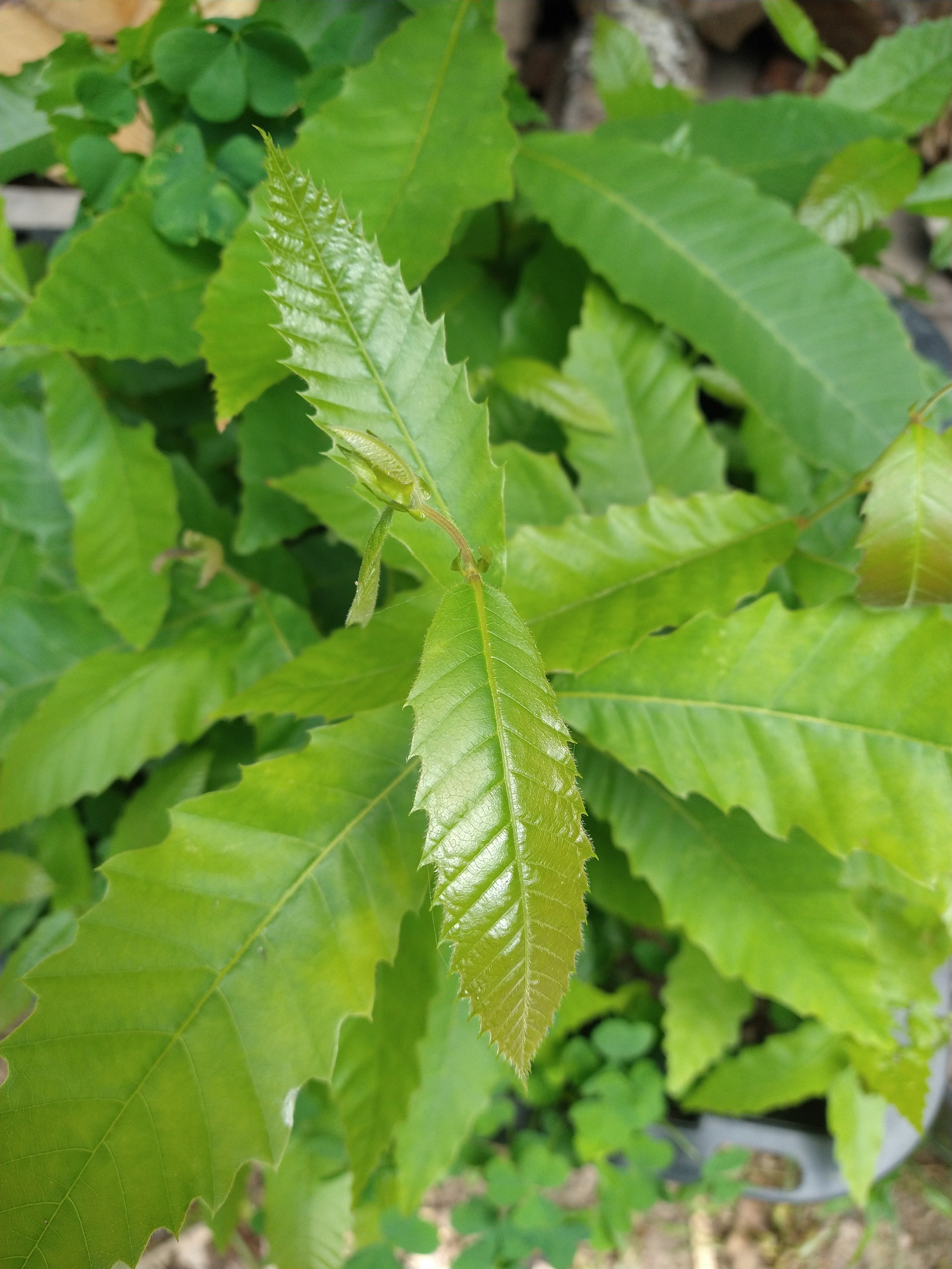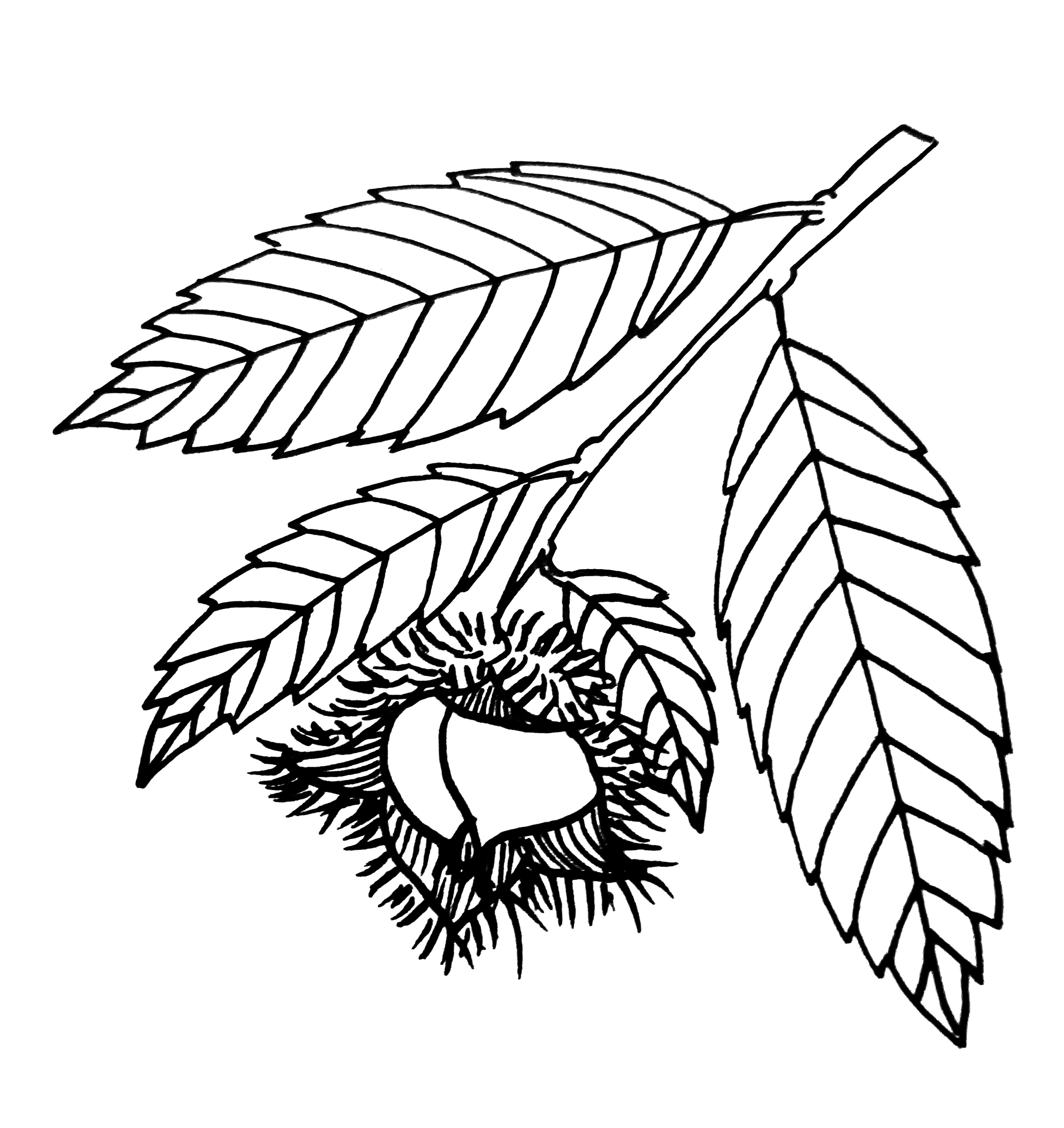Local Hybrid Chestnut
The Castanea genus are a group of large deciduous tree belonging to the huge family Fagaceae. This seed was collected by hand from Clifford England’s (www.nuttrees.net) chestnut orchard that his grandpa planted 50+ years ago. They are a mix of American, European and Asian genetics) The edible nut matures in September inside a spiny husk.
Growing conditions: Full sun (6 or more hours of direct sunlight a day), well drained to dry soil, likes acid.
Size at maturity: 15’-20’
Uses: Currently, the USA imports the vast majority of its chestnut demand. We believe that the chestnut will once again regain its status as a major staple crop in the next decade or two. If you’ve ever eaten a sweet and chewy chestnut fresh from being roasted on some coals on an open fire in autumn, you’ll see why we believe this. No wonder they wrote a Christmas song about this tree.
USDA Hardiness Zone: 4-8
The Castanea genus are a group of large deciduous tree belonging to the huge family Fagaceae. This seed was collected by hand from Clifford England’s (www.nuttrees.net) chestnut orchard that his grandpa planted 50+ years ago. They are a mix of American, European and Asian genetics) The edible nut matures in September inside a spiny husk.
Growing conditions: Full sun (6 or more hours of direct sunlight a day), well drained to dry soil, likes acid.
Size at maturity: 15’-20’
Uses: Currently, the USA imports the vast majority of its chestnut demand. We believe that the chestnut will once again regain its status as a major staple crop in the next decade or two. If you’ve ever eaten a sweet and chewy chestnut fresh from being roasted on some coals on an open fire in autumn, you’ll see why we believe this. No wonder they wrote a Christmas song about this tree.
USDA Hardiness Zone: 4-8
The Castanea genus are a group of large deciduous tree belonging to the huge family Fagaceae. This seed was collected by hand from Clifford England’s (www.nuttrees.net) chestnut orchard that his grandpa planted 50+ years ago. They are a mix of American, European and Asian genetics) The edible nut matures in September inside a spiny husk.
Growing conditions: Full sun (6 or more hours of direct sunlight a day), well drained to dry soil, likes acid.
Size at maturity: 15’-20’
Uses: Currently, the USA imports the vast majority of its chestnut demand. We believe that the chestnut will once again regain its status as a major staple crop in the next decade or two. If you’ve ever eaten a sweet and chewy chestnut fresh from being roasted on some coals on an open fire in autumn, you’ll see why we believe this. No wonder they wrote a Christmas song about this tree.
USDA Hardiness Zone: 4-8




